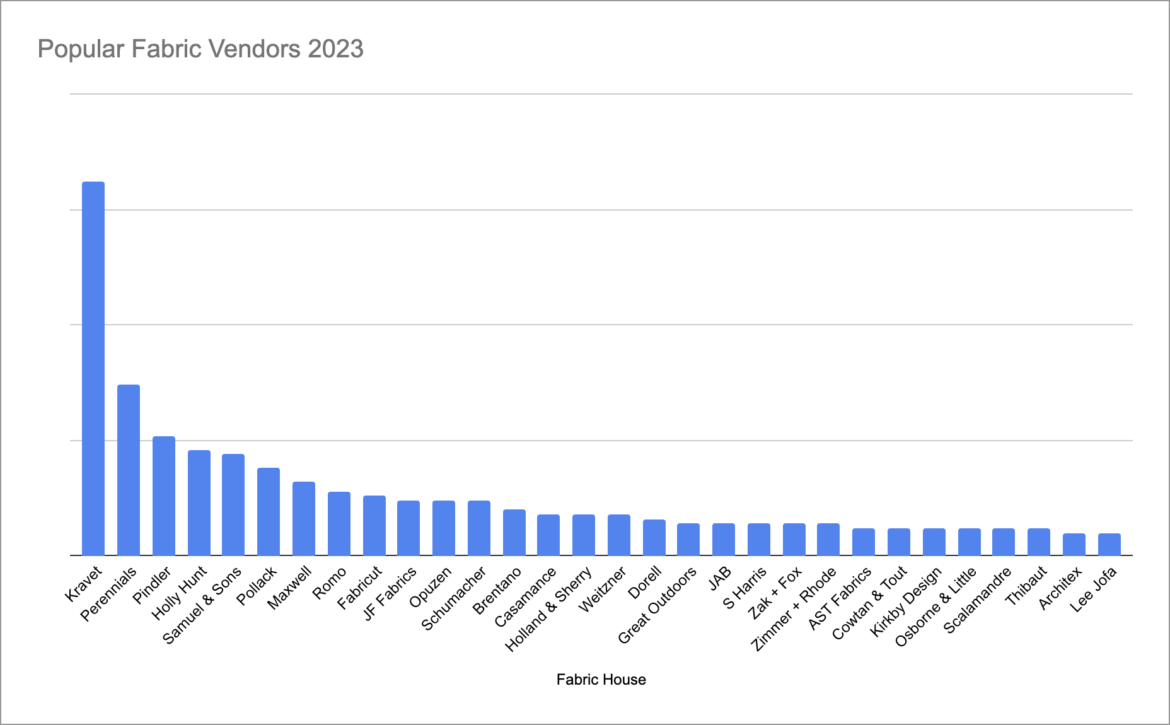Truth: Almost nothing is the same.
Most of us can defend why a thousand-dollar sofa is a waste of money. It’s often uncomfortable, visibly low-quality, and practically built to break down. But what exactly goes into a custom sofa price and what does a more significant investment get you—more importantly, how do you make sure it’s money well spent?
To clear the air on what elements impact the price (and value!) of a three-seater custom sofa, we checked in with Frank Eybsen, the founder of Buildlane. After years working in South Los Angeles furniture factories, Eybsen has earned expert status when it comes to the materials and craftsmanship that go into creating a sofa—and why that’s a win for everyone involved.
Of course, types of cushions and fabric play a role, but Eybsen says the intangibles have a much bigger effect on cost. “The most important parts in the price of an upholstered custom sofa are the labor force and the working conditions,” he explains. Here’s how Eybsen breaks it down:

The Frame
Though a crucial structural component of a custom sofa, frame material doesn’t actually account for much price discrepancy. “On the very cheap end, manufacturers are just getting by with whatever kind of composite wood they can throw together,” Eybsen details. But even your budget sofa likely has a pretty solid hardwood frame. “The cheapest,” he admits, “will eventually snap when somebody sits on it.”
The only way the materiality of a frame is going to substantially increase the cost of a three-seater sofa is if it’s made of metal. Certain contemporary styles call for a metal frame, which will bump up the price appreciably.
The shape of the frame, however, can make a monetary splash. Straight lines and right angles are inexpensive, while curves and rounded edges cost more because they require more skill and more labor to achieve.
The Suspension
According to Eybsen, sinuous springs (aka “S springs”) are the most common and least expensive type of suspension. This is what you’ll find in most box-store sofas. Eight-way hand-tied coil springs, which are labor-intensive, supportive, and silent rather than squeaky, are far pricier.
The Cushions
Low-grade foam is the cheapest cushion fill out there. Flat, firm, uncomfortable cushions—the kind that flip up on one side when you sit on the other—are likely made of cheap foam. Better quality sofas have both finer and denser foam. The best ones have high-density foam wrapped in feathers, down, or synthetic fill.
If you were to spec a sofa with “craftsman’s choice” materials, it would likely have feather-wrapped foam cushions. “That’s the industry standard,” says Eybsen. (The industry, of course, being high-end interior design.) Before fabric, shipping, or designer’s fee (accounting for your time and creativity), a three-seater of that quality would clock in around the $1,500 to $2,000 range compared to $1,000 for high-density foam alone.
A just-wake-me-up-on-Monday feather-and-down confection can raise the price to $4,000 or more. Save that for your fairest clients. (This is also the type you need to “fluff” or “punch” to return the plumpness to each cushion.)

The Fabric
Upholstery offers the single biggest lever in terms of price. “Yes, there’s fabric that’s $2 per yard,” says Eybsen, “But most of the textiles we receive from designers is $100 per yard or more,” Eybsen reports, noting that performance fabrics like polyester blends are on the cheaper side, while real velvets and linens are more expensive.
Leather, however, is the priciest of all. “If you want to go nuts, you could do mohair or hair-on hide,” imagines Eybsen. “You see those chairs with the shearling fluff everywhere and the chair is $8K because 20 animals made up that chair.”
The Legs
Move along—no major cost or savings here. Most wooden legs are turned, so intricate shapes can be achieved with a low level of skill. Metal and acrylic legs, as well as wooden ones that are carved by hand, will cost a few hundred more.
The Labor
Eybsen believes that labor is the most critical factor in determining a custom sofa’s price. “Certainly, furniture made in the U.S. is more expensive than furniture made in parts of the world where workers have fewer rights, the cost of living is lower, or factories are routinely exploiting people,” he says. Even domestically, different working conditions (think: safety, health insurance, and even break-time) can have a drastic impact on the price. “There are a lot of regulations in furniture manufacturing,” says Eybsen. “Some shops fly under the radar to cut margins, but we’re doing it by the book—and it shows, we’re proud of our craftspersons and they’re proud of the furniture they create.” And there’s a price for that—labor is the biggest factor in the cost equation and it’s not always something that designers or their clients immediately think about.

The Craftsmanship
From the ability to achieve details such as perfectly straight seams to the techniques required to carve foam for a shapely profile, the craftsmanship poured into any given custom sofa is also reflected in the price. “Not every upholsterer in the shop can do a Chesterfield,” says Eybsen. “There is usually only a small number of guys who know how to do that kind of tufting.” That skilled work costs more because fewer people can do it (and it takes more hours to complete).
The Bottom Line
Eybsen thinks that a mid-century modern sofa made overseas would cost around $1K, thanks to its right angles and flat cushions that allow manufacturers to get away with just using foam. On the other side of the spectrum, a version of that biscuit-tufted, Italian vintage sectional you’ve been eying on Instagram—made in the U.S.—with eight-way hand-tied coil springs, high resilience, feather-wrapped foam, will start at $8K or more.







Such a great article! A great reminder of why and how to sell custom upholstery!